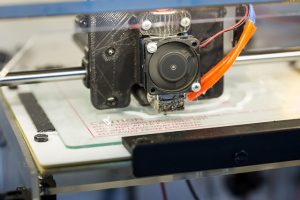
3D printing has become an increasingly popular solution for manufacturing-related processes, some of which include prototyping, production and the creation of proof-of-concept models. Using a 3D printer, manufacturing companies can build objects from a digitally created model. The object model is created using computer-aided design (CAD) software, after which the CAD file is uploaded or transferred to the 3D printer. 3D printers, however, rely on a bed to form the structure of the printed object.
What Is a 3D Printing Bed?
Also known simply as a print bed, a 3D printing bed is a flat surface on which a 3D printer builds an object. Most types of 3D printers, including fused filament fabrication (FFF) 3D printers, are designed to deposit material through a nozzle. As the printer head moves, it releases material. A 3D printing bed is simply the surface where a 3D printer deposits this material.
3D printing beds typically consist of a square- or rectangular-shaped box. Some of them are made of aluminum or steel, whereas others are made of polymers or even glass. Regardless, the 3D printing bed is a relatively simple component that offers a surface on which a 3D printer can build an object. The 3D printer’s nozzle will release material onto the bed. As the material builds up, it will form the desired object.
Adhesion
Although there are many types of 3D printing beds, they all require strong adhesion to function properly. If a printing bed has a nonstick surface, the material may move around after being deposited rather than stay in place. Most 3D printers head the material before releasing it out the nozzle. If the material is deposited onto a nonstick printing bed, it won’t stay in place. Therefore, 3D printing beds are typically coated with an adhesive compound.
Levelness
3D printing beds must also be level. If a 3D printing bed is inclined or declined, gravity may pull the material in an undesirable direction. Keep in mind that even if a 3D printing bed is level, the surface on which it’s placed may not be level.
Object Release
3D printing beds must be designed so that the printed object can be released. Adhesion helps to prevent the material from moving, but equally important is the ease at which the printed object can be released. If the printed object strongly sticks to the printing bed, removing it could result in damage. Therefore, printing beds are designed so that once the material cools and hardens, the printed object can be released.
